G’DAY, we are Ben Musumeci and Andrew Whitaker from ‘The.Salties’.
We are based in Hervey Bay and do most of our fishing locally throughout the Great Sandy Strait and Fraser Island waters as well as the freshwater streams and tributaries of the Mary River. We primarily chase fish in the estuaries and get out in the bay looking for big pelagic fish when the weather permits. In these areas we love catching flathead, threadfin and blue salmon, barramundi, queenfish, jewfish, Australian bass, sooty grunter and everything else on offer.
We catch these fish using lures and want to share some insights on where to look for them and how to capture them. The diversity on offer in these areas is incredible. Even when the weather is dismal we can manage to get into the quiet freshwater streams, either in kayaks or from the land. Fishing is our passion. In this article we will discuss finding and catching flathead on the Fraser Coast.
The humble flathead is an iconic Australian fish, and the best place to find them is the Great Sandy Strait, located between the mainland of Hervey Bay and Fraser Island. The Straits are home to an incredibly diverse range of fish species but the population of flathead in this area would have to be greater than any other species. They can be found almost anywhere in this enormous marine environment. We have spent years targeting flathead using a wide variety of methods and always look forward to our next session. Chasing flathead is great fun and while they can be caught throughout the year, we love to fish for them in winter in particular because the bigger flathead move into the area and most other species slow down due to the cold conditions.
It’s always exciting to plan the next trip but we also have a sense of calm and confidence knowing that by using the right techniques, we are in with a great chance of locating and hooking these fish in the majority of conditions. While flathead can be found in most water depths, we love fishing for them in shallow water, and you would be surprised to see just how shallow these fish will sit on the bank of a beach or creek mouth. The Great Sandy Strait, as the name suggests, is full of narrow, winding channels and sandbanks and is the perfect playground in which to chase flathead, with endless locations and options for targeting them either from a boat or land.
The first thing to consider is your gear. We employ very light spin combos with 10lb braid and 10lb fluorocarbon leader. You can go lighter than this, however, when you hook into bigger fish they can definitely put up a hell of a fight, so using 10lb line gives you a much better chance of landing a bigger flathead. We recommend that you go as light as you are comfortable with. For us, 10lb leader is the minimum when chasing these fish because flathead have small raspy teeth that will rub through your line quite easily during a fight. Lure selection is not particularly relevant when targeting flathead.
We have caught these fish on anything from hard-body lures to soft plastics and even metal slugs that we normally use to chase pelagic fish. We have had by far the most success using soft plastics, mainly because of how efficient and easy soft plastic fishing can be. Many soft plastics have an inbuilt swimming action, so you don’t need to impart an action on them. You don’t need to be erratic when retrieving your lure. We use soft plastics of 3”-4” in length, which is the perfect size for lots of other fish species as well. Jig head size depends on the size of plastic you wish to use. Anything from a 3/0- 5/0 hook is more than adequate when combined with a 1/4oz jig head.
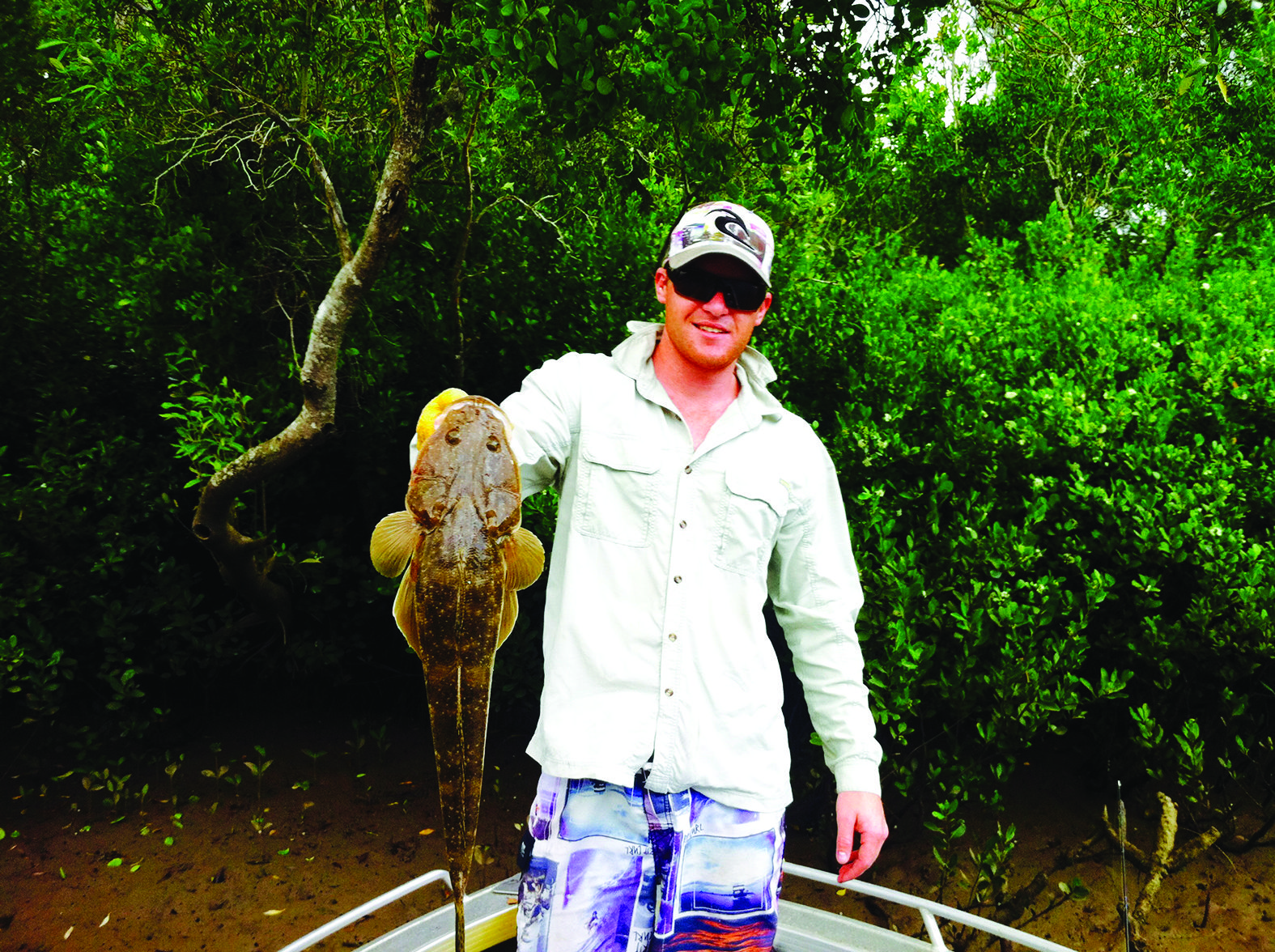
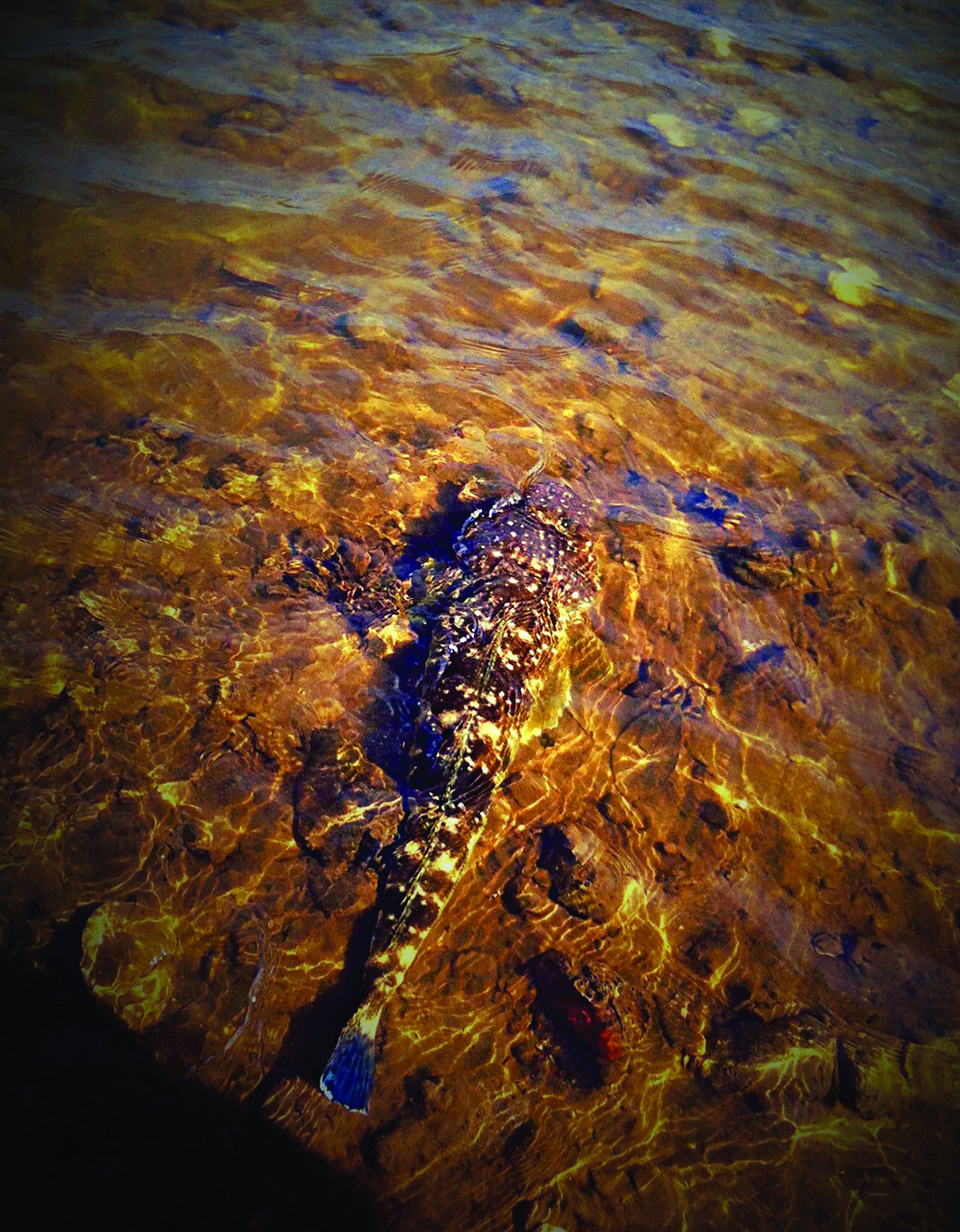
environment. This picture was captured as the flathead was let go in the same area it was taken from a minute earlier.
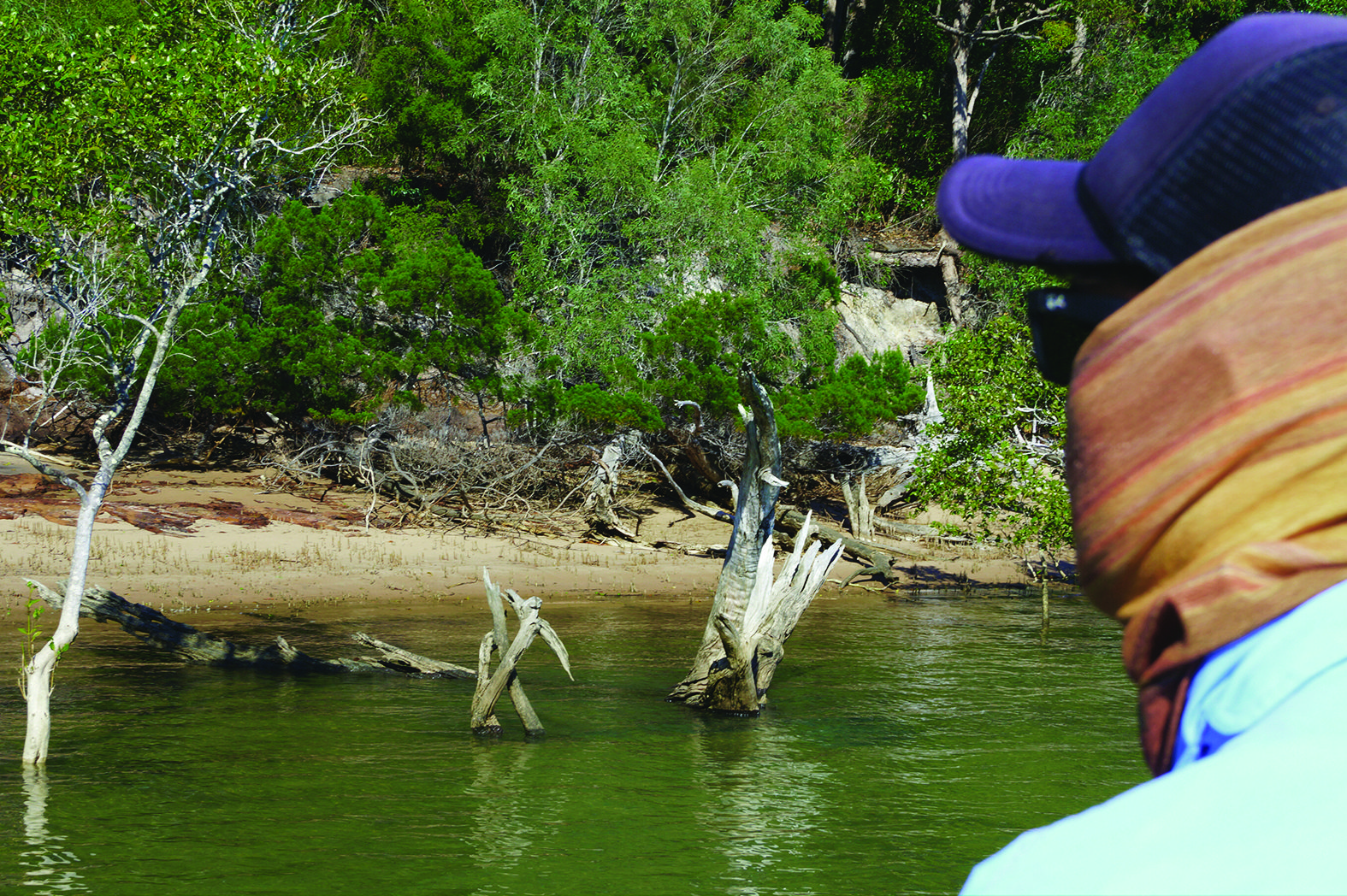
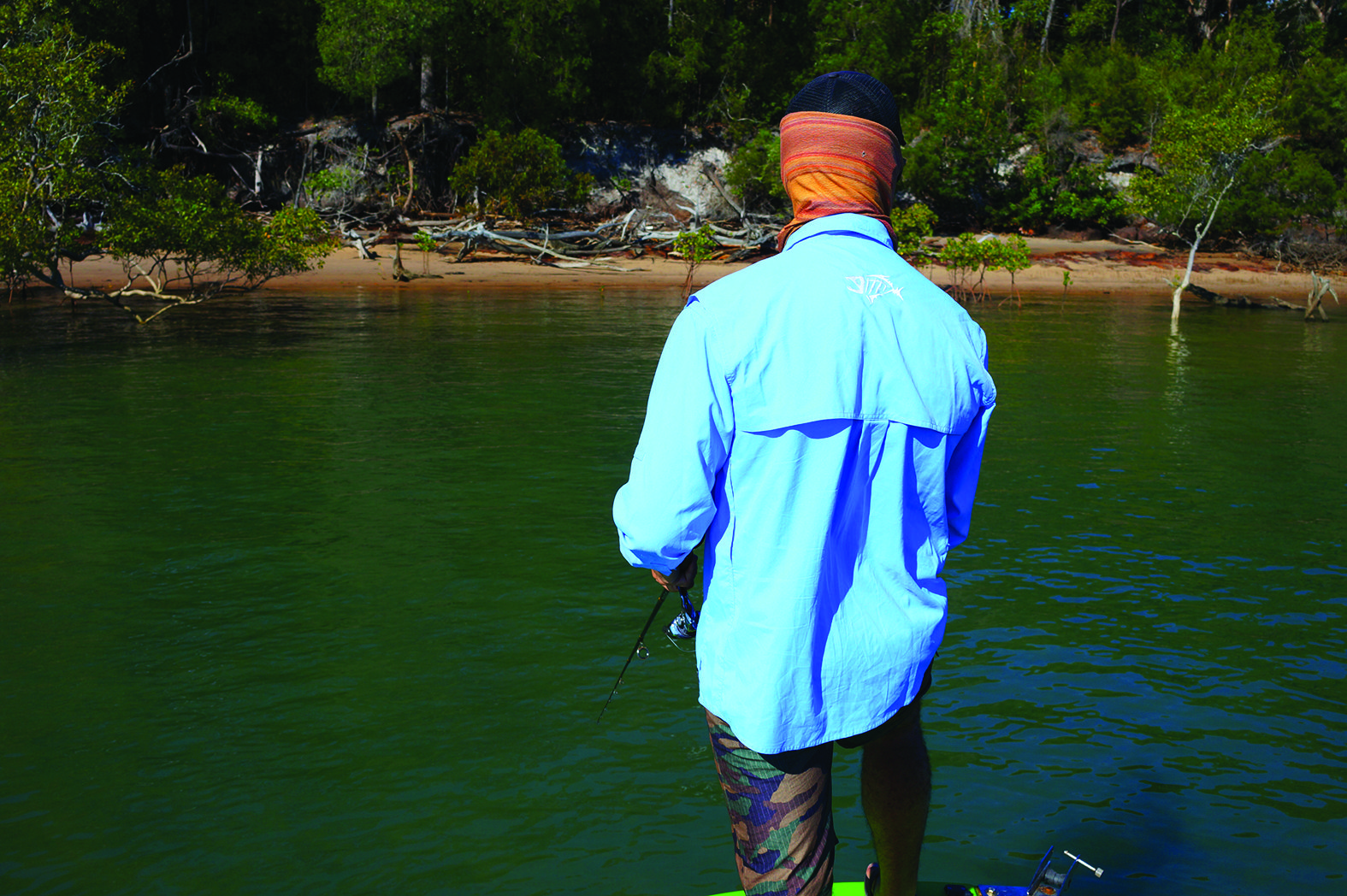
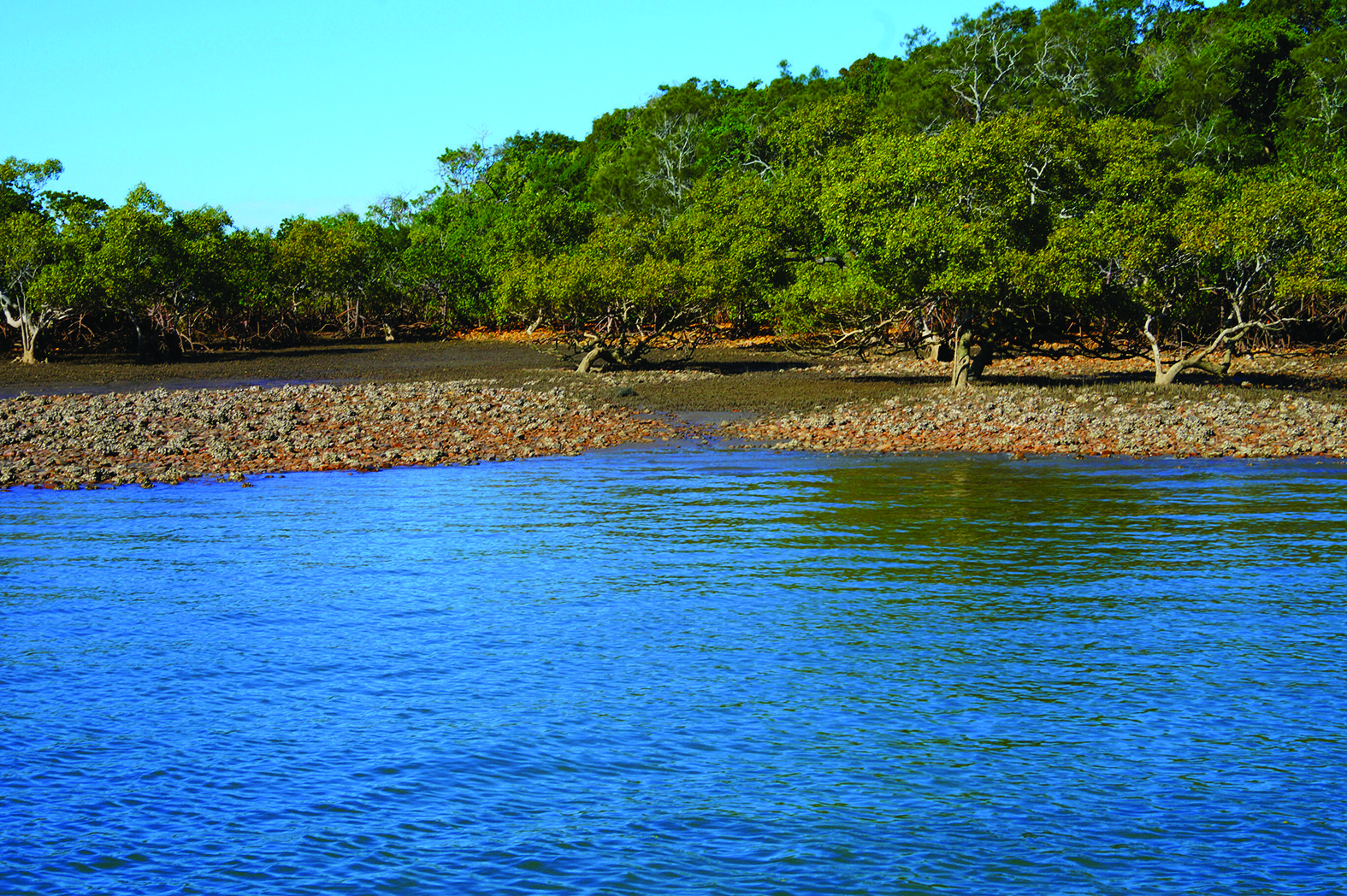
Find whatever you are comfortable with and have a good go at using the various lure types. Flathead will eat anything as long as you put it in front of them. Their nature is incredibly aggressive and they love to ambush baitfish. They will sink down into the sand and lay in wait for bait to swim over before lashing out and swallowing it. Flathead certainly are predatory fish but also very tactical in the way they hunt. They will not freely swim around looking for food and this is why we believe casting some bait into an area and letting it sit on the bottom is a very inefficient way to chase these fish. The more ground you cover, the better. And lures, particularly soft plastics, present the easiest way to fish the length of a bank or drop-off.
Flathead like to move into particular areas on certain tides. The key to finding them is normally to locate an area where baitfish are likely to be pushed along by the tide or where the bait will have to retreat to on a falling tide. For example, a large sand or mud flat covered by water only at high tide is a typical area in which to find flathead. If you take a walk around at low tide you may find marks in the sand where flathead have been sitting during the high tide. On the high, baitfish move up as far as possible to feed. The flathead know this, and they also know that as the tide recedes, the baitfish will be pushed back out, which is when they will be waiting to ambush their prey.
At high tide, we usually look for large sand or mud areas only covered by a few feet of water. If the bottom has some sandy gutters, shells, rocks, mud or particularly coffee rock, you will have an even better chance at finding flathead. When lure fishing for flathead, cast as far into the shallows as possible, right to the bank, retrieving back towards deeper water. Flathead will sit with their heads facing the current because that is the direction the bait will come from.
We find that low tide is when things really start to fire up. Any water that recedes from a flat usually exits through drains, and these are the best places to find flathead. An hour either side of the low tide is usually the best time. Move around and look for large areas that only have a few trickles of water coming off them. Essentially, any last bait that has been holding up in the shallows is being funnelled out through these points. You can bet the flathead will be sitting right in the mouths of these drains.
When targeting these areas, get your lure as far up into the shallows as possible. Many times we actually cast too far, ending up on the bank, and then drag the lure off only to be annihilated by a flathead sitting in less than a foot of water. You would be surprised at just how shallow these fish will go. About 80 percent of the fish we catch around drains are sitting in less than 30cm of water. Aside from locating the right areas to fish, we believe the most important factor (and the one most people overlook) is the retrieve.
As mentioned, we have captured flathead in a number of different scenarios with a variety of methods but the greatest success rate is achieved with a very slow retrieve. Typically we cast out, get our lures into the right area, give the rod one or two short flicks, wind in the slack line and then let the lure sit for at least three to five seconds. Flathead will wait for food to be presented to them.
So if your lure lands a metre away but is then retrieved at speed, they typically won’t be interested in chasing down the lure, especially when a plethora of other bait is available. However, if your lure lands a metre away and simply twitches up and down without moving very far, it will definitely get the flathead’s attention and the fish will likely not be able to resist smashing the lure. Flathead are fantastic fun to chase and put up a really good fight. And if you fish light, shallow and retrieve slowly, you will give yourself a great chance of landing more of these fish.
If you have any questions or would like some more tips, feel free to contact us on our ‘The. Salties’ Facebook page and check out our photos on Instagram (instagram.com/the.salties) to see our regular catches in this fantastic region.
For Bay and bluewater action in the Hervey Bay region, click here!
 Bush ‘n Beach Fishing Magazine Location reports & tips for fishing, boating, camping, kayaking, 4WDing in Queensland and Northern NSW
Bush ‘n Beach Fishing Magazine Location reports & tips for fishing, boating, camping, kayaking, 4WDing in Queensland and Northern NSW










Hey Ben and Andrew. We moved up from Adelaide 14 weeks ago only to find our house due for build completion September will now be June 23 at the earliest. Sobeit for lots of reasons. We have been staying at Mudjimba all of that time and while I catch and release any number of bream the flathead eludes me. Have been using baits or soft plastics so far without success. Now you need to understand flathead in adelaide are typically 30 cm .. so bigger lizards are my dream . Ate you able to suggest land based fishing locations I should try at Hervey Bay?. The caravan (and wife and I) will be there 23rd June and we will be staying in the harbour view caravan for a week to 10 days. Any suggestions will be welcomed and deeply appreciated. TX. JOHN 0402 880 738